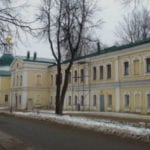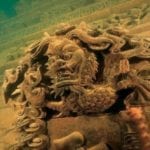 Weird Stuff
Weird Stuff  Weird Stuff
Weird Stuff  Mysteries
Mysteries 10 Tragic Disappearances and Deaths in Joshua Tree National Park
 History
History 10 Ways Childhood Really Sucked in the Old West
 Music
Music 10 Name Origins of Famous Bands from the 1990s
 Religion
Religion 10 Biggest Turnarounds by the Catholic Church
 Weird Stuff
Weird Stuff 10 Unbelievable Times Laws Had Unintended Consequences
 Humans
Humans Ten Historic Women Who Deserve Way More Credit Than They Got
 Movies and TV
Movies and TV 10 Films That Spawned Major Lawsuits
 History
History Ten Times Towns Were Wiped Off the Face of the Earth
 Creepy
Creepy 10 of the Most Disturbingly Haunted Public Houses in the UK
 Weird Stuff
Weird Stuff 10 Niche Subcultures That Are More Popular Than You Might Think
 Mysteries
Mysteries 10 Tragic Disappearances and Deaths in Joshua Tree National Park
 History
History 10 Ways Childhood Really Sucked in the Old West
Who's Behind Listverse?

Jamie Frater
Head Editor
Jamie founded Listverse due to an insatiable desire to share fascinating, obscure, and bizarre facts. He has been a guest speaker on numerous national radio and television stations and is a five time published author.
More About Us Music
Music 10 Name Origins of Famous Bands from the 1990s
 Religion
Religion 10 Biggest Turnarounds by the Catholic Church
 Weird Stuff
Weird Stuff 10 Unbelievable Times Laws Had Unintended Consequences
 Humans
Humans Ten Historic Women Who Deserve Way More Credit Than They Got
 Movies and TV
Movies and TV 10 Films That Spawned Major Lawsuits
 History
History Ten Times Towns Were Wiped Off the Face of the Earth
 Creepy
Creepy 10 of the Most Disturbingly Haunted Public Houses in the UK
10 Fascinating Tales Of How Asian Cities Got Their Names
We’ve previously discussed how certain countries got their names. Far too often, these names come from mythology or historical events. Naturally, local legends, folktales, and misinterpretations abound when it comes to the naming of cities themselves.
Here are 10 tales of how cities in Asia ended up being called what they are today.
10Yerevan
Armenia
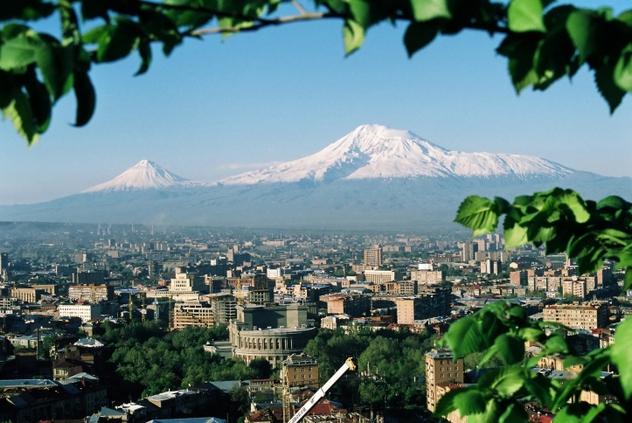
As we’ve mentioned in a previous list, Armenia is known for having local legends deeply rooted in Biblical tales. Its old name—Hayk—meant “The Land of Noah’s great-great-grandson, Hayk,” who settled in those lands. Similarly, the country’s capital, Yerevan, considers its name to be derived from the well-known Biblical story of Noah’s flood.
In the Bible, God unleashed a Great Flood to destroy the wickedness of the world. For many days aboard the Ark, Noah could see only the flood waters in all directions. Eventually, he sent out a dove which returned with an olive branch, taken as a symbol of peace.
Noah beheld before him a mountain—Mount Ararat—a sight that so relieved him that he exclaimed “Yerevats!” (“Behold! It has appeared!”). Thus, Noah’s joy upon seeing Mount Ararat eventually came to be known as Yerevan, a beautiful city where the legendary mountain looms in the distance.
9Kandahar
Afghanistan
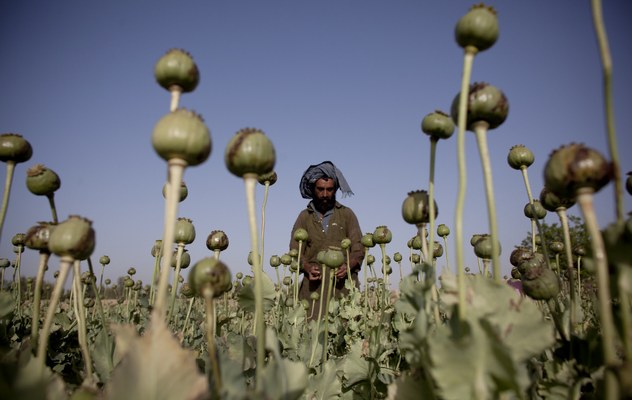
Legends tell of an ancient kingdom known as Gandhara, the territory of which is now part of modern-day Afghanistan and Pakistan. The kingdom is believed to have later evolved from “Gandhara” to “Kandahar.”
Ultimately though, the most well-known origin of the city’s name is that of its founder, Alexander the Great. Alexander had many cities and settlements constructed bearing his name—this one, founded in 330 B.C., was known as “Alexandria in Arachosia.” The locals ended up simplifying the name as “Kandahar.”
Temples in the city bore ancient inscriptions in Greek and Aramaic, including those written by Emperor Ashoka. It may seem fitting, considering that Kandahar has been known in history as the site of many great battles (most recently in the war against the Taliban), that its name was derived from one of the greatest conquerors to have lived.
8Bangalore & Hyderabad
India

The rich and beautiful culture of India has given the world many great tales ingrained in local lore, many of which have given rise to the very names of their cities and states. For instance, Kashmir, a disputed region characterized by rugged, mountainous terrain, is believed to have been one vast lake thousands of years ago.
As the story goes, the ancestors of Kashmir’s Hindu population lived beside the vast lake where a demon known as Jalodbhava terrorized them. Since Jalodbhava was invincible while in the water, they could not hope to defeat him until the arrival of the ancient sage Kashyap. The sage beseeched Vishnu who pierced the side of a mountain, creating a deep gorge which completely drained the lake. Jalodbhava, now on dry land, lost his invincibility and was annihilated by the gods. Thus, the new area became known as “the abode of Kashyap“—or “Kashyap Mar”—later simplified as “Kashmir.”
As for city names, Bangalore, despite being India’s high-tech “Silicon Valley,” derives its name from an old folktale involving beans. Legends tell us of a king who had lost his way while out hunting. Hungry from his journey, the king encountered an old woman who served him boiled beans. Thus, the king named the area “Bendakalooru” (literally “boiled beans“). In the 18th century, the name was anglicized as “Bangalore” by the British Raj.
Meanwhile, romance bloomed in Bhagnagar, where a Muslim ruler founded the city and named it after his beloved Bhagmati, a Hindu dancing girl. When Bhagmati converted to Islam, she became known as “Hyder Mahal,” so the city was renamed “Hyderabad” in her honor.
7Mandaluyong & Paranaque
Philippines
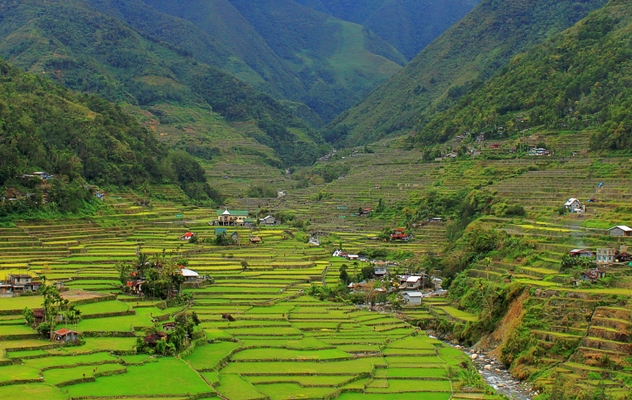
The Philippines, despite being one of the most devoutly Catholic nations in the world, has had many tales involving supernatural and mystical beings. One of these tales pertains to Cubao, one of the busiest districts in Metro Manila. Cubao was believed to have been a vast field or jungle many years ago, inhabited not only by local flora and fauna but by shape-shifting witches who took the form of hunchbacks. Fear of these beings led locals to shout “Kuba, o!” (“Look, a hunchback!”) to warn others whenever one was spotted.
Filipinos are also a deeply romantic people, thus a version of the founding of one of its cities has endured. Local tales speak of how Luyong, a Maharlika (warrior of nobility), sought the hand of Manda, the beautiful daughter of a tribal chief. The chief, not agreeing to the match, proposed a series of challenges and duels just so Luyong could have his daughter’s hand in marriage. Luyong overcame the odds, but the chief proved obstinate. The couple eloped, and the place where they settled became known as “Mandaluyong.”
Still, it’s worth noting that due to 300 years of Spanish occupation, the country is bound to have its share of comedy from the colonizers as well. One story involves the city of Paranaque, whose name is believed to have come from a misunderstanding. A Spanish driver riding a horse-drawn carriage passed by a town and told the driver “para aqui, para aqui!” (“Stop here!”). The driver was unfamiliar with the foreign language, so he kept going while the Spaniard kept shouting at the top of his lungs. Locals saw the commotion and, laughing, retold the story—“para aniya aqui” (“he said ‘stop here’ “)—over and over until the name stuck.
6Phnom Penh
Cambodia
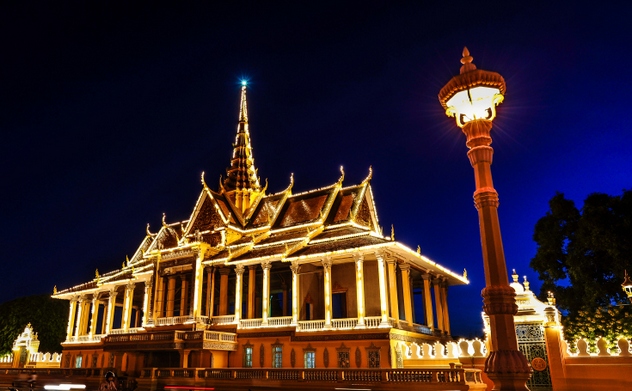
The old capital of the Khmer Empire was Angkor, one of the most ancient and culturally significant cities in Southeast Asia. Angkor, which simply meant “capital city,” was the world’s largest preindustrial settlement. Like great cities of yore, Angkor’s glory diminished overtime, and the capital eventually moved to Phnom Penh, over 300 kilometers (186 mi) away.
One of the fascinating legends surrounding the new capital is that of Old Lady Penh. As Lady Penh gathered firewood along the riverbed, she spotted a curious-looking tree floating nearby. Upon closer examination, she was surprised to find four statues of Buddha and one of Vishnu. After she’d told the villagers about her find, they took it as a sign that the area was divinely blessed, and that the Khmer Empire should eventually move the capital to that site.
Old Lady Penh and the villagers erected a shrine atop a “phnom” (the Khmer word for “hill”), and it took the name of its founder, the legendary Old Lady, “Penh.”
5Surabaya
Indonesia
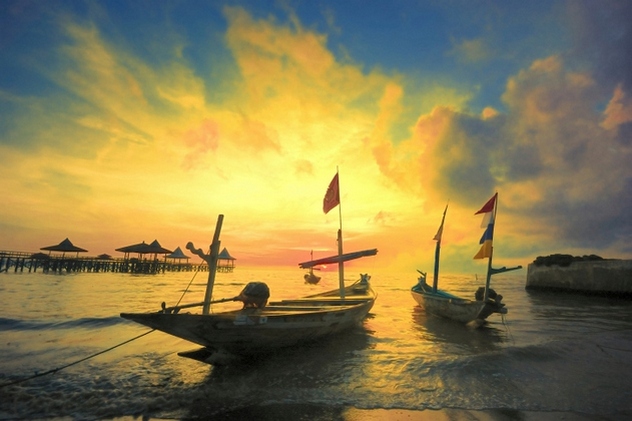
A few days after the end of World War II and the Japanese surrender, Indonesia declared its independence from Dutch rule. From October 27 to November 20, 1945, a fierce battle raged in the streets of Surabaya, where the British sought to aid the Dutch and other Europeans in the area. Even though thousands of Indonesians died during the Battle of Surabaya, their heroic efforts paved the way for a transition to an independent nation.
In local mythology however, a different battle took place on the very shores of the city. Legends tell us of how two of the animal kingdom’s most ferocious predators—the shark (“suro”) and the crocodile (“baya”)—once fought to determine who was the strongest. Their fight was so brutal that the sea turned red with their blood. In fact, the city’s coat of arms features both animals forming the letter “S.”
Ancestors also found new meaning in the folktale after the Mongols were soundly defeated in battle on May 31, 1293, abruptly ending their conquest of the Indonesian islands. The Mongols were believed to be the “shark,” as their invasion forces came from the sea, while the locals were the “crocodiles” who defended the shores. The day of the Mongol defeat also became the date of the city’s founding.
4Toyota
Japan

Cities are more often than not named after mythological beings, local terrain features, or historical figures. Very rarely do cities get named after actual companies. One hilarious story involves Topeka, Kansas, which changed its name to “Google” during March 2010 in an effort to bring the company’s fiber-optic technology to the city. Google, of course, jokingly renamed itself “Topeka” for one day—April 1, naturally.
The story of the town of Koromo is neither a spur-of-the-moment decision nor an April Fools’ joke; rather, it shares a long history with the Japanese automobile manufacturer Toyota. Koromo had been an agricultural village for centuries. During the late 1800s, Koromo had seen a boom in the silk manufacturing industry. When the market for raw silk collapsed during the 1930s, Toyoda Automatic Loom Works, Ltd. bought 2 million square meters (21.5 million ft2) of undeveloped land in Koromo to build factories for their new business venture—automobiles.
The plants in Koromo manufactured vehicles under the “Toyoda” brand and family name. However, some found that a change was necessary. The Toyoda family agreed to rename its company “Toyota”—which, when written in Katakana, would require eight brush strokes (the number eight was considered lucky). Similarly, “Toyota” just sounded a lot more modern than “Toyoda” (which meant “fertile rice paddies“). Business boomed for the company despite the devastation of World War II. As a result of their local and nationwide contributions, Koromo was renamed “Toyota City” on January 1, 1959. A year later, owing to its place in the industry, Toyota became a sister city to Detroit.
3Macau & Guangzhou
China
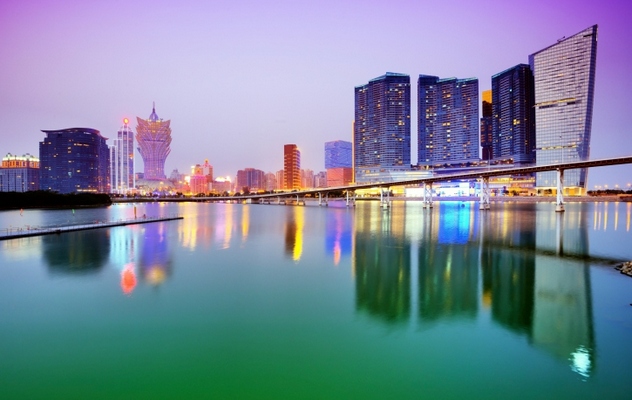
We’ve previously stated how Spanish conquistadors and explorers misheard and mispronounced various place names that ended up becoming the names of countries. Their neighbors, the Portuguese, are equally guilty of such hilarious debacles.
Macau, a Special Administrative Region in China, has had many names throughout history, most of which had something to do with the waters surrounding the city. When the Portuguese visited the area around the 16th century, they asked the local fishermen what the place was called. The locals answered that this was where they worshipped Mazu, goddess and protector of fishermen and seafarers, and that here was the temple and bay dedicated to her (“Ah-ma ngou” and “Ah-ma gok,” respectively). The Portuguese collectively scratched their heads and just ended up calling it “Macau.”
Just a couple of hours north of Macau is Guangzhou. The Portuguese ended up calling it “Cantao,” perhaps because they have confused it with the name of the province, “Guangdong.” “Cantao” ended up turning into “Canton” later on. Absolutely no one in China called the city by such a name, but virtually every European explorer ended up referring to it as such. Thus, our usage of the term “Cantonese” to refer to their cuisine and recipes is quite erroneous as well.
2Bangkok
Thailand

Bangkok, which means “village of wild plums,” is rarely called that way by native Thais; that is, unless they’re speaking to a foreigner who might have no idea that they call it “Krung Thep” (translated as “City of Angels”). Thais can also recite the full ceremonial name of their city, which is quite a mouthful indeed—“Krung Thep” are merely the first two words of it! The full name is: “Krung Thep Mahanakhon Amon Rattanakosin Mahinthara Ayuthaya Mahadilok Phop Noppharat Ratchathani Burirom Udomratchaniwet Mahasathan Amon Piman Awatan Sathit Sakkathattiya Witsanukam Prasit.”
The literal translation of that name is: “The land of angels, the great city of immortality, various of divine gems, the great angelic land unconquerable, land of nine noble gems, the royal city, the pleasant capital, place of the grand royal palace, forever land of angels and reincarnated spirits, predestined and created by the highest devas.”
Unfortunately, to the disappointment of many Thais, The Guinness Book of World Records does not recognize Bangkok as having the longest place name in the world. That honor belongs to a nondescript hill in New Zealand, which, translated from Maori, would mean the “place where Tamatea, the man with the big knees, who slid, climbed and swallowed mountains, known as land-eater, played his flute to his loved one.”
1Astana & Almaty
Kazakhstan
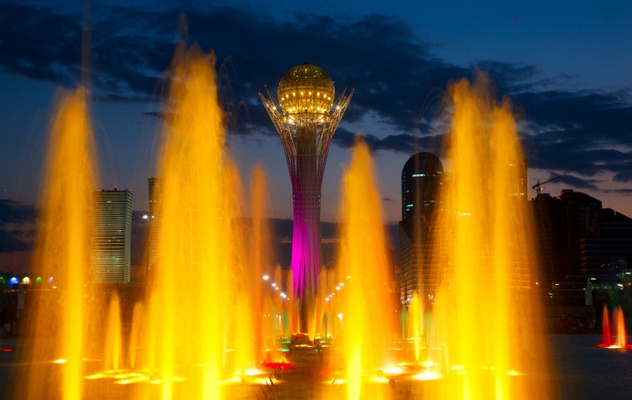
We’ve spoken of how Saparmurat Niyazov, Turkeminstan’s dictator, had quite a bit of a wacky disposition. From naming months after himself, to renaming bread after his mother and requiring every citizen to memorize his book, Niyazov has proven to be quite desperate to have himself immortalized.
Turkmenistan’s neighbor Kazakhstan also had a fair share of oddities from its leader, Nursultan Nazarbayev. For instance, Nazarbayev once raised the issue of changing the name of the entire country itself. Why? Because the suffix “-stan” dissuades a lot of foreigners, apparently. He compared Kazakhstan to Mongolia, the latter being visited by more tourists and businessmen owing to the lack of “-stan” in that country’s name.
In 1994, Nazarbayev also suggested to move the capital from Almaty to Akmola. Almaty, formerly known as Alma-Ata, means “Father of Apples” and is widely believed by botanists to have been the area where the delicious fruit originated from. What caused the sudden shift to a new capital? Akmola, which means “white gravestone,” didn’t sound right to Nazarbayev, so he had the city’s name changed to Astana, which in Kazakh simply meant “capital.” Analysts suggest that the primary motivation for these changes was so that the generic-sounding Astana would end up being renamed in Nursultan Nazarbayev’s honor in the future. It’s not so far-fetched, considering he’s ruled the country since 1989.
+Singapore
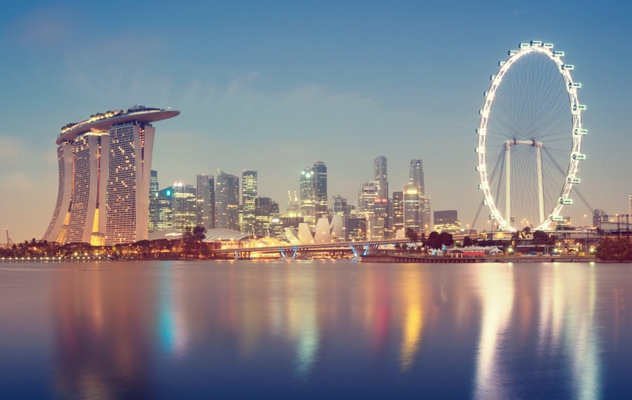
The naming of Singapore comes from a legend involving Sang Nila Utama, a prince from Sumatra. Singapore’s old name had been Temasek (“sea town“). The prince and his companions caught sight of it while out hunting. The prince also caught sight of an animal so marvelous, he described it as being “magnificent with a black head, a white neck, and a red body.” The animal looked deep into the prince’s eyes then sprinted off into the interior. The prince asked his men what the creature was, and the adviser replied: “I have heard that there is an animal that looks magnificent and regal like that. They call it ‘singa’ or ‘lion.’ ”
Sang Nila Utama rejoiced and saw it as a sign. He said the island was where he would one day live and that it was to be called “Singapura”—“Lion City.” Oddly enough, there were actually no lions in the area at all—the animal was not native in the Malay Peninsula. Perhaps it was a tiger they spotted. Nevertheless, the term coined by the prince stuck throughout the years and has been ingrained in Singaporean ideology and cultural monuments to this day.
Jo lives a few hours from the Philippine capital, “there are Yamstick Mangroves here”—“may nilad”—later on known as Manila. Got any local legends that gave names to your towns or cities? Talk to Jo via email or in the comments section.





